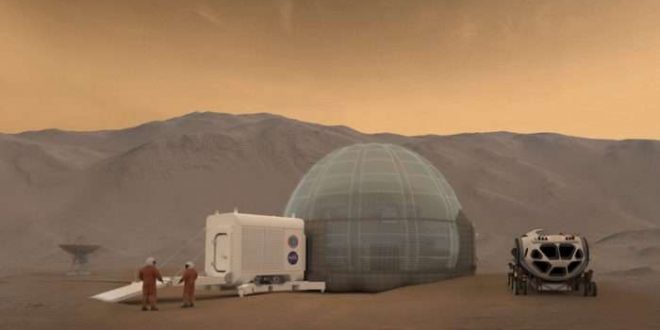As NASA prepares to one day send astronauts to Mars, such missions come with a host of engineering and habitability problems, to say the least. Now, the nation’s space-exploration agency has a potential engineering solution that relies on an unexpected building material: ice.
Researchers and experts at NASA’s Langley Research Center have came up with a novel, efficient solution that repurposes planet resources: The Mars Ice Home.
“After a day dedicated to identifying needs, goals and constraints we rapidly assessed many crazy, out of the box ideas and finally converged on the current Ice Home design, which provides a sound engineering solution,” said Langley senior systems engineer Kevin Vipavetz, facilitator for the design session.
The Mars Ice Home is a large inflatable torus (think of the shape of an inner tube and you know the torus) that is surrounded by a shell of water ice. The advantages to this design is that it is lightweight and can be transported and deployed using simple robotics. It would then be filled with water before the crew arrives. The water inside the Ice Home could potentially be converted into rocket fuel for the Mars Ascent Vehicle and the structure could double as a storage tank that could be refilled for the next crew to live on the Red Planet.
The big benefit is that the water ice would be very good at shielding astronauts from galactic cosmic rays that have the potential to cause radiation sickness or lead to cancer later in life. All the materials selected for Ice Home are translucent to allow outside light in and the material could withstand years of harsh use.
Agencies/Canadajournal
 Canada Journal – News of the World Articles and videos to bring you the biggest Canadian news stories from across the country every day
Canada Journal – News of the World Articles and videos to bring you the biggest Canadian news stories from across the country every day



